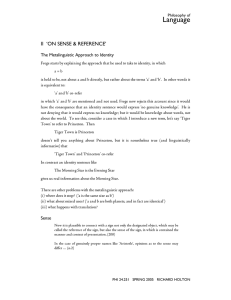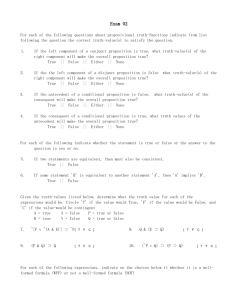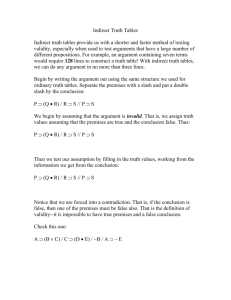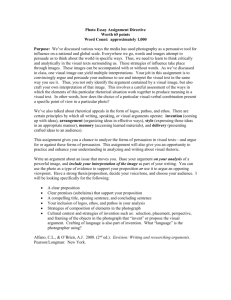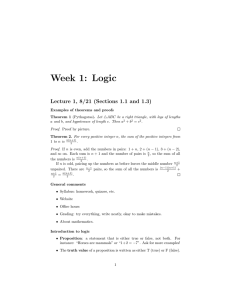propositional logic iii: truth tables for propositions and arguments
advertisement
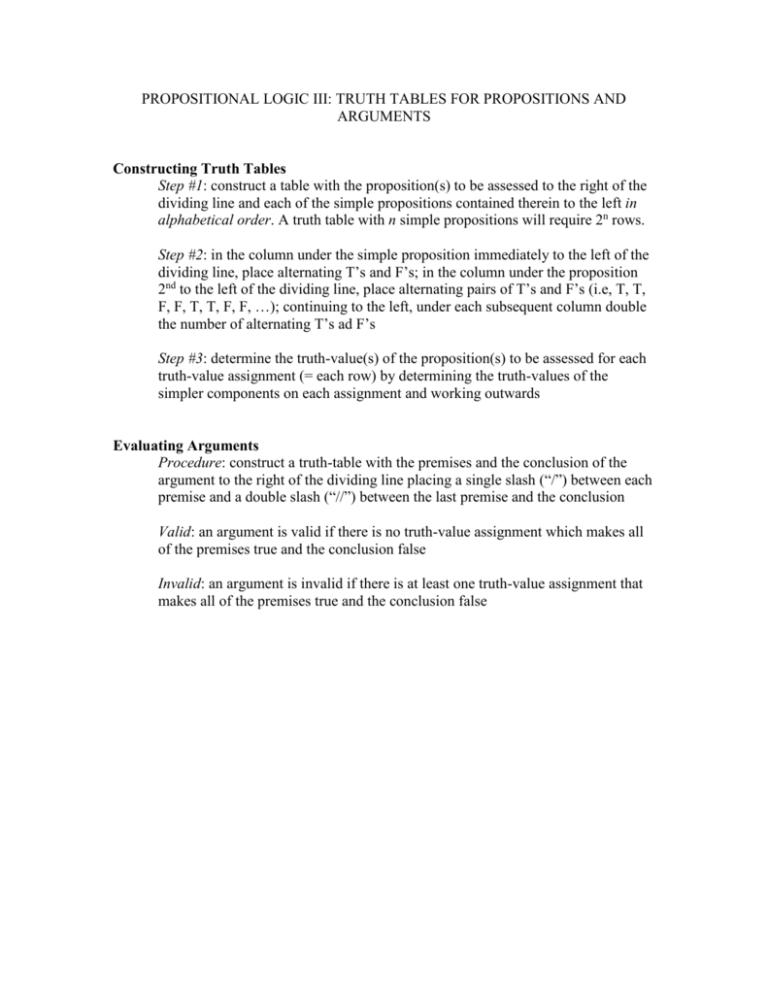
PROPOSITIONAL LOGIC III: TRUTH TABLES FOR PROPOSITIONS AND ARGUMENTS Constructing Truth Tables Step #1: construct a table with the proposition(s) to be assessed to the right of the dividing line and each of the simple propositions contained therein to the left in alphabetical order. A truth table with n simple propositions will require 2n rows. Step #2: in the column under the simple proposition immediately to the left of the dividing line, place alternating T’s and F’s; in the column under the proposition 2nd to the left of the dividing line, place alternating pairs of T’s and F’s (i.e, T, T, F, F, T, T, F, F, …); continuing to the left, under each subsequent column double the number of alternating T’s ad F’s Step #3: determine the truth-value(s) of the proposition(s) to be assessed for each truth-value assignment (= each row) by determining the truth-values of the simpler components on each assignment and working outwards Evaluating Arguments Procedure: construct a truth-table with the premises and the conclusion of the argument to the right of the dividing line placing a single slash (“/”) between each premise and a double slash (“//”) between the last premise and the conclusion Valid: an argument is valid if there is no truth-value assignment which makes all of the premises true and the conclusion false Invalid: an argument is invalid if there is at least one truth-value assignment that makes all of the premises true and the conclusion false

